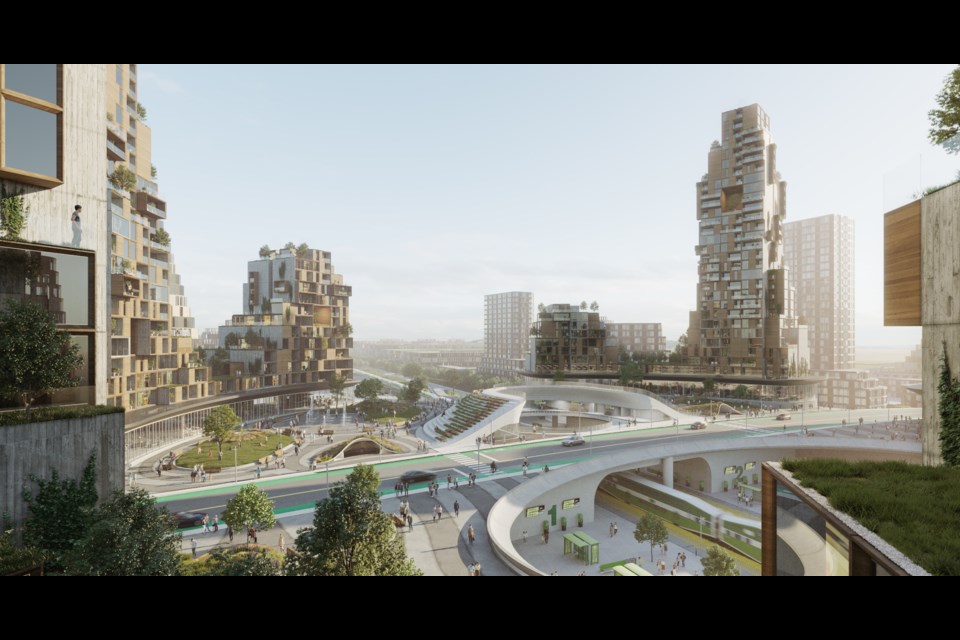Town of Innisfil growth director Tim Cane credits a residents’ survey, posted on the Get Involved Innisfil website, with helping to inspire the futuristic GO Transit train station on Line 6, proposed as part of the Mobility Orbit planned community.
During a virtual open house this week, Cane said respondents had indicated a desire “to have a more integrated and future-proof station, rather than one where you just get on or off… That input was critical for us.”
The survey, posted from Nov. 26, 2019 until Jan. 31, 2020, attracted 1,900 unique views, but only 490 responses.
And some of the results were surprising.
Of respondents, 27.8 per cent said they would use an Innisfil GO train station five days or more per week. Another 14.7 per cent said they would use the GO station two to four days per week.
However, 35.7 per cent of those who filled out the survey – more than one-third – said they would only use the train and the station one to three times per month. Fourteen per cent said they would never use it.
As for specific requests, it was no surprise that the No. 1 amenity being asked for was adequate and well-designed parking (just under 40 per cent), especially since travelling by private vehicle was identified as the top means that residents would use to access the station.
Other preferred amenities included food/restaurants (34.3 per cent), retail options (26 per cent) and a coffee shop (20.8 per cent).
Some amenities were not listed by the respondents, perhaps because it was assumed that any transit station would include them anyway. Only 3.67 per cent identified wifi and charging stations as important amenities; just over six per cent asked for bike racks; and only 4.3 per cent mentioned washrooms.
There is no actual design of the GO station at this point, only a rendering presented by PARTISANS that shows an at-grade station, with room for three tracks, partially covered by an over-arching rail park and plaza that would provide open space at the heart of the Orbit high-density community.
The cost of the station was estimated at $29 million in a recent meeting of Innisfil council. However, the cost of a rail-deck park appears to be much higher.
In 2016, the City of Toronto endorsed a proposal for a rail-deck park, covering the rail corridor between Bathurst Street and Blue Jays Way. On completion, it would span more than 20 acres (8.15 hectares) at a projected cost of $1.6 to $3.7 billion, or approximately $200 million to $460 million per hectare.
Cane noted that, while a portion of a rail-deck park was included in the $29-million estimate, it does not include the total deck area.
“The estimated deck area as shown in the station vision is approximately 3,600 square metres,” Cane explained. “The area has been sized to try and accommodate the functions of the ultimate Orbit, which is why it looks larger as part of this initial stage.
"Cost estimates are still being carried out by the station design team, but should be less expensive than the Toronto example due to reduced complexities and ability to be integrated with underground parking structures," he added.
Discussions on the design, with both Metrolinx and Cortel Group, are ongoing.
"The $29-million price continues to evolve as the station design evolves," Cane said.




